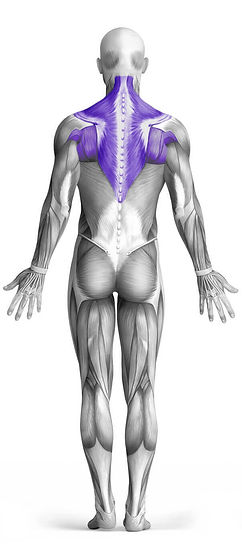Barbell Bent Over Row 101 Video Tutorial
0

Exercise Synopsis
Target Muscle Group
Upper Back
Execution
Compound
Force Type
Pull
Required Equipment
Barbell
Fitness Level
Intermediate
Alternatives
None
Timer
Hour
Minute
Second
Stopwatch
00:00:00:00
Overview
The Barbell Bent Over Row is a compound strength training exercise primarily targeting the upper back muscles while engaging secondary muscle groups including the abs, biceps, lats, lower back, and shoulders. To perform this exercise, individuals use a barbell and maintain a bent-over position with their back parallel to the ground, knees slightly bent, and a firm grip on the bar. The movement involves pulling the barbell towards the lower chest, contracting the back muscles and promoting overall upper body strength development. The Barbell Bent Over Row is an effective and versatile exercise that not only enhances back muscle development but also engages various other muscle groups, making it a valuable addition to a well-rounded strength training routine.
How to Perform
Stand upright and grasp the barbell with a double overhand grip, ensuring a secure hold.
Hinge forward at the hips until your torso is approximately parallel to the floor or slightly above, initiating the movement by driving your elbows behind your body and retracting the shoulder blades to engage the upper back muscles effectively.
Execute the pulling motion by drawing the barbell towards your belly button, maintaining control throughout the movement, and ensuring the bar touches your body.
Gradually lower the bar back to the starting position, emphasizing controlled descent to maximize muscle engagement and minimize momentum.
Complete the desired number of repetitions, focusing on proper form and the targeted muscle groups, which include the upper back as the primary target and secondary engagement of the abs, biceps, lats, lower back, and shoulders.
Incorporate this exercise into your routine for a comprehensive upper body workout, promoting strength development and muscle balance across multiple muscle groups. Additionally, ensure proper warm-up and cool-down exercises to enhance overall safety and effectiveness.
★ Bonus: For exercises that involve external weights (such as dumbbells, barbells, or machines), the One Rep Max (1RM) calculator can help you estimate your maximum lifting capacity. Use it to track your strength progress and adjust your training for optimal results.
Tips
Explore different head positions during the exercise, such as looking forward or packing the neck, to determine which is more comfortable and effective for your individual biomechanics.
Maintain abdominal tension throughout the movement to prevent excessive arching of the spine while pulling the barbell towards your body, promoting better form and spinal stability.
Prioritize control over momentum, ensuring a deliberate and controlled movement throughout each repetition to maximize muscle engagement and minimize the risk of injury.
Avoid jutting the head forward during the pulling phase, as this can compromise neck alignment and overall exercise effectiveness.
Pay attention to the movement of the shoulder blade on the rib cage; avoid locking the shoulder blade down, and instead, allow it to move naturally through the glenohumeral joint for a more comprehensive activation of the targeted muscle groups.
Tips Addition: To enhance the effectiveness of the Barbell Bent Over Row, consider gradually increasing the weight as your strength improves, ensuring progressive overload for continued muscle development. Additionally, focus on maintaining a neutral spine throughout the exercise to prevent unnecessary strain on the lower back. Always prioritize proper form over heavy weights to reduce the risk of injury and optimize the benefits of this compound movement.
How Not to Perform
Avoid Rounded Back: Do not allow your back to round during the movement. Maintain a straight and neutral spine to prevent unnecessary stress on the lower back and ensure effective engagement of the upper back muscles.
No Excessive Use of Momentum: Resist the temptation to use momentum to lift the barbell. Jerking or swinging the weight can compromise form and reduce the effectiveness of the exercise. Instead, focus on a controlled and deliberate movement.
Steer Clear of Overarching: Refrain from arching your back excessively, particularly as you pull the bar towards your body. Overarching can strain the lower back and shift the focus away from the targeted upper back muscles.
Avoid Elevating Shoulders: Do not shrug or elevate your shoulders excessively during the row. Keep your shoulders depressed and focus on retracting the shoulder blades to emphasize engagement of the upper back, rather than relying on the traps.
Do Not Neglect Abdominal Engagement: Ensure that your abdominal muscles remain engaged throughout the exercise. Neglecting core stability can lead to poor posture and reduce the effectiveness of the workout for both the upper back and secondary muscle groups.
Don't Allow Elbows to Flare Out: Avoid letting your elbows flare out excessively during the pulling phase. Keep them close to your body to maximize activation of the targeted muscle groups and prevent unnecessary stress on the shoulder joints.
No Neglect of Full Range of Motion: Do not cut short on the range of motion. Ensure that you pull the barbell all the way to your body, allowing for a complete contraction of the upper back muscles. Neglecting the full range of motion may hinder muscle development.
Avoid Rapid Descents: Steer clear of rapid descents of the barbell. Lower it under control to maximize eccentric muscle activation and reduce the risk of injury. Rushing through the lowering phase can compromise the effectiveness of the exercise.
Variations
Variations of fitness exercises refer to different ways of performing a specific exercise or movement to target various muscle groups, intensities, or goals. These variations aim to challenge the body differently, prevent plateaus, and cater to individuals with varying fitness levels.
Alternatives
Alternative exercises in fitness refer to different movements or activities that target similar muscle groups or serve the same training purpose as the primary exercise. These alternative exercises can be used as substitutes when the original exercise is unavailable or challenging to perform due to various reasons such as equipment limitations, injuries, or personal preferences.








